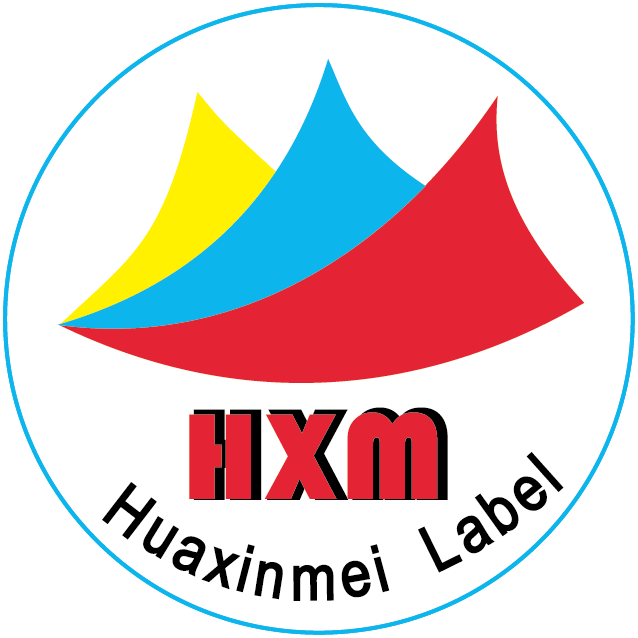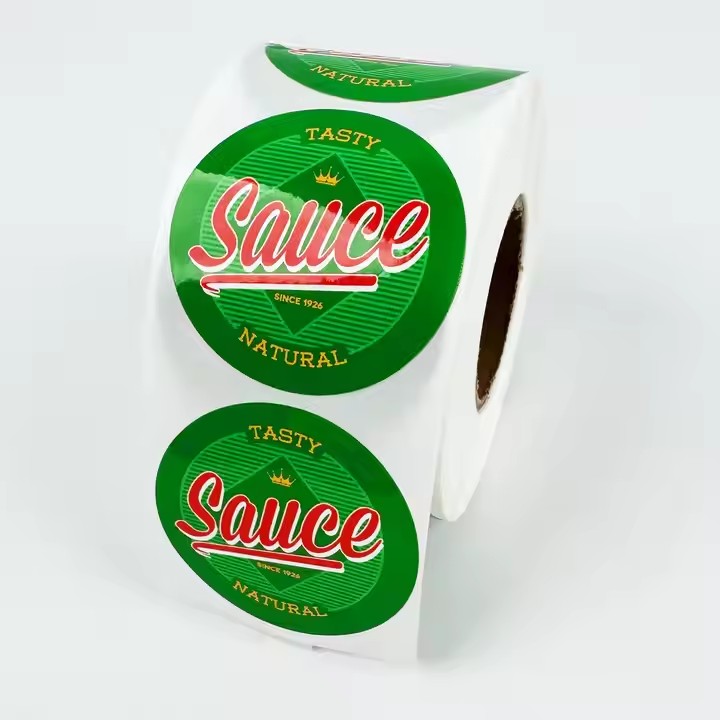Paper Materials
Copperplate Paper
It has a smooth surface and high whiteness, and can present clear and vivid colors. It is suitable for printing high-precision patterns and texts, and is often used to make two-dimensional stickers with high requirements for image quality, such as product labels, decorative stickers, etc. Copperplate paper is a kind of sticker with a wide range of applications. It has bright colors and is suitable for various labels. For example, clothing labels can use copperplate paper. Copperplate paper has good texture, a wide range of applications, and is also very affordable in terms of price.
It has a certain stiffness and flexibility, making it easy to process and paste, and can adapt to the surfaces of objects of different shapes. However, its waterproof and moisture-proof performance is relatively weak, and it is easy to deform and fade when exposed to water.

Cardboard
It has a relatively thick texture, good stiffness, and high strength. It can withstand a certain amount of external force extrusion and friction, and is not easy to be damaged. It is suitable for making two-dimensional stickers that require a certain degree of hardness and stability, such as business card stickers, greeting card stickers, etc. Cardboard is applied to those label papers that need to resist friction, for example, in industries such as cards, artworks, and trendy toys.
It has good printing adaptability and can achieve rich effects through various printing processes. However, the flexibility of cardboard is not as good as that of copperplate paper, and the waterproof problem also needs to be noted. Generally, methods such as lamination can be used to improve its waterproof performance.
Specialty Paper
There are many types, such as art paper, pearlescent paper, fluorescent paper, etc. Art paper has a unique texture and feel, which can add an artistic atmosphere and a unique visual effect to two-dimensional stickers; pearlescent paper has a pearlescent luster on the surface, which has high decorativeness; fluorescent paper has bright and eye-catching colors and can be easily recognized in a relatively dark environment. It is often used to make warning stickers or identification stickers that need to be prominently displayed.
Specialty paper can meet some special design needs, but usually the cost is relatively high, and the processing difficulty of some specialty papers is relatively large. It is necessary to select according to specific usage scenarios and requirements.
Plastic Film Materials
PVC (Polyvinyl Chloride)
It has good flexibility, transparency and water resistance, and can maintain stable performance in different environments, not being easily eroded by substances such as water, acids and alkalis. It can be made into transparent or semi-transparent two-dimensional stickers, and is used in fields such as packaging and labeling, which can clearly display the content of the pasted object.

Surface treatment can be carried out through processes such as printing and embossing to achieve diversified appearance effects. However, PVC materials will produce harmful gases when burned, which does not meet environmental protection requirements, and its use is limited in some occasions with high environmental protection requirements.
PET (Polyethylene Terephthalate)
It has excellent water resistance, weather resistance and mechanical properties, is tough and durable, not easy to tear or break, and can maintain the integrity and stability of the sticker for a long time. It has high transparency and good gloss, and the printing effect is clear and bright. It is often used to make label stickers for high-end products, identification stickers for electronic products, etc.
At the same time, PET materials have good environmental protection performance and can be recycled, meeting the environmental protection requirements of modern society. However, the cost of PET materials is relatively high, and the flexibility in some special environments may not be as good as that of PVC.
PP (Polypropylene)
It has good waterproof and moisture-proof performance, strong chemical stability, and good tolerance to most chemical substances. It is light in weight and flexible, and can adapt to objects of different shapes and surfaces. It can be used to make various types of two-dimensional stickers, such as food packaging stickers, daily necessities label stickers, etc.
PP materials have good printing performance, and exquisite printing effects can be achieved through a variety of printing processes. In addition, PP materials also have certain environmental protection advantages and can be degraded relatively quickly in the natural environment.
Metal Foil Materials
Aluminum Foil
It has good ductility and flexibility, and can easily fit on the surface of the object to form a tight wrap. Aluminum foil has excellent moisture-proof, waterproof and anti-oxidation properties, and can effectively protect the pasted object from the influence of the external environment. It is often used for packaging stickers that require high barrier performance, such as food and medicine.
The surface has a metallic luster and strong decorativeness. Its aesthetics can be further enhanced through processes such as printing and hot stamping to make two-dimensional stickers with a high-end texture. However, the cost of aluminum foil is relatively high, and attention needs to be paid to preventing scratches and damage during the processing.
Copper Foil
It has good electrical conductivity and thermal conductivity, and is widely used in the electronics field, such as making identification stickers for electronic components, circuit label stickers, etc. At the same time, copper foil also has a certain degree of corrosion resistance and oxidation resistance, which can protect the information and patterns on the surface of the sticker to a certain extent.

Copper foil has a relatively soft texture and is easy to process and form, but the price is relatively high. During use, attention needs to be paid to avoiding contact with other metals to prevent electrochemical reactions.
In addition, in order to improve the performance and service life of two-dimensional stickers, some auxiliary materials are also used, such as adhesives, lamination materials, etc. The choice of adhesive will affect the sticking effect and the time of maintaining stickiness of the sticker. Common adhesives include acrylate adhesives, rubber adhesives, etc. Lamination materials can enhance the wear resistance, water resistance and gloss of the sticker, such as PET lamination, OPP lamination, etc.


